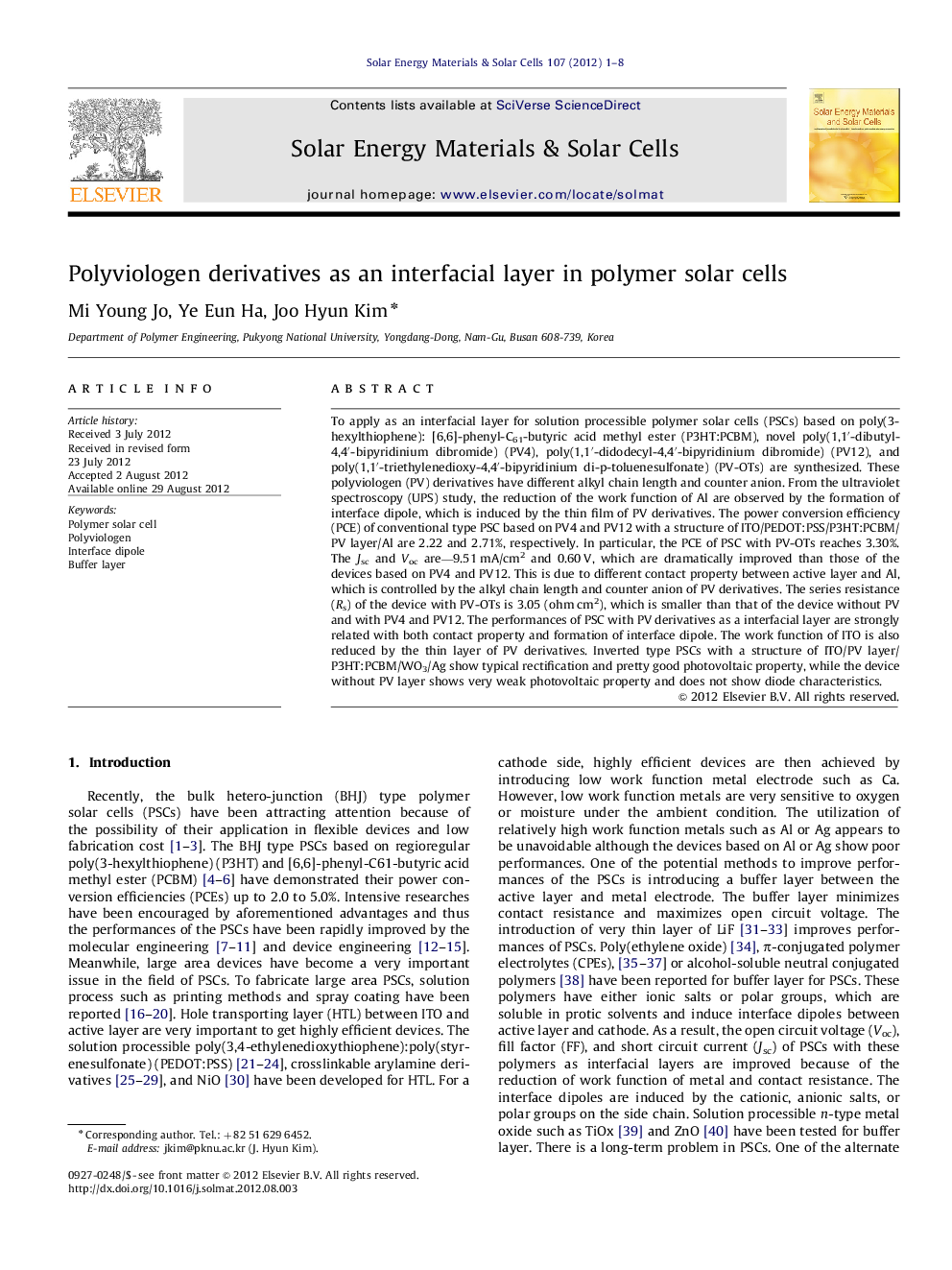| Article ID | Journal | Published Year | Pages | File Type |
|---|---|---|---|---|
| 78884 | Solar Energy Materials and Solar Cells | 2012 | 8 Pages |
To apply as an interfacial layer for solution processible polymer solar cells (PSCs) based on poly(3-hexylthiophene): [6,6]-phenyl-C61-butyric acid methyl ester (P3HT:PCBM), novel poly(1,1′-dibutyl-4,4′-bipyridinium dibromide) (PV4), poly(1,1′-didodecyl-4,4′-bipyridinium dibromide) (PV12), and poly(1,1′-triethylenedioxy-4,4′-bipyridinium di-p-toluenesulfonate) (PV-OTs) are synthesized. These polyviologen (PV) derivatives have different alkyl chain length and counter anion. From the ultraviolet spectroscopy (UPS) study, the reduction of the work function of Al are observed by the formation of interface dipole, which is induced by the thin film of PV derivatives. The power conversion efficiency (PCE) of conventional type PSC based on PV4 and PV12 with a structure of ITO/PEDOT:PSS/P3HT:PCBM/PV layer/Al are 2.22 and 2.71%, respectively. In particular, the PCE of PSC with PV-OTs reaches 3.30%. The Jsc and Voc are—9.51 mA/cm2 and 0.60 V, which are dramatically improved than those of the devices based on PV4 and PV12. This is due to different contact property between active layer and Al, which is controlled by the alkyl chain length and counter anion of PV derivatives. The series resistance (Rs) of the device with PV-OTs is 3.05 (ohm cm2), which is smaller than that of the device without PV and with PV4 and PV12. The performances of PSC with PV derivatives as a interfacial layer are strongly related with both contact property and formation of interface dipole. The work function of ITO is also reduced by the thin layer of PV derivatives. Inverted type PSCs with a structure of ITO/PV layer/P3HT:PCBM/WO3/Ag show typical rectification and pretty good photovoltaic property, while the device without PV layer shows very weak photovoltaic property and does not show diode characteristics.
► Polyviologen derivative for polymer solar cells. ► Interface dipole can be induced by the thin layer of polyviologen. ► A thin layer of polyviologen act as an electron transporting layer.
